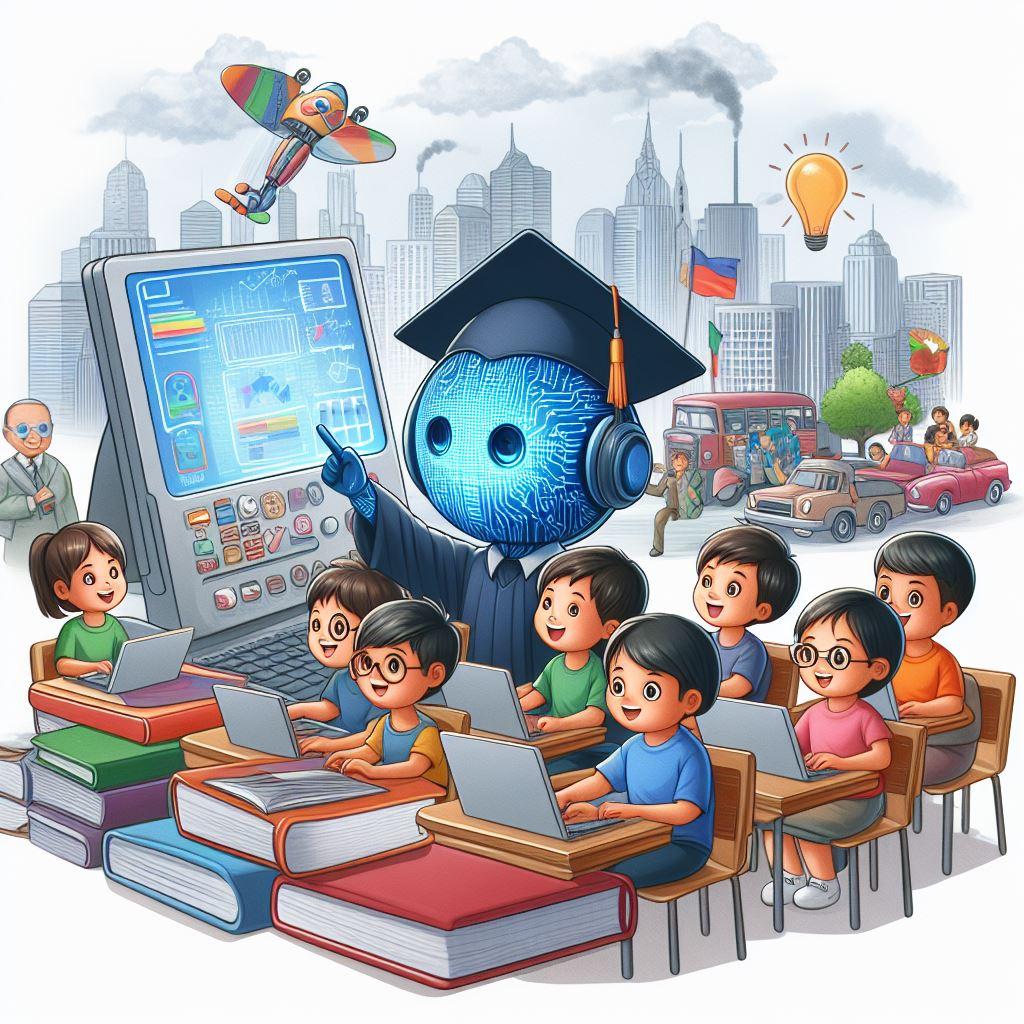How AI Empowers Students with Disabilities: Transforming Education Through Accessible Technology
Accessible technology is changing the face of education, especially for students with disabilities. Artificial Intelligence (AI) is at the heart of this transformation,unlocking endless possibilities for inclusive learning. In this thorough article, we’ll explore how AI empowers students with disabilities, highlight breakthrough solutions, and share practical strategies to maximize the benefits of accessible technology in classrooms.
Understanding the Importance of Accessibility in Education
Inclusive education is not just a trend—it’s a necessity. Millions of students worldwide face barriers due to physical, sensory, cognitive, or emotional disabilities. Accessible technology ensures equal learning opportunities, fostering independence and academic success. AI-driven solutions take accessibility to the next level by personalizing learning, automating support, and breaking down barriers in real time.
- Physical Disabilities: Mobility aids,adaptive keyboards,and speech-to-text tools improve classroom participation.
- Sensory Disabilities: screen readers, captioning, and audio description tools make digital resources accessible to all.
- Cognitive & Learning Disabilities: AI-powered apps tailor lessons, simplify content, and provide real-time feedback.
How AI is Revolutionizing Accessible Technology for students with Disabilities
AI harnesses the power of data and machine learning to create smart educational tools. These tools can:
- Identify specific learning needs using data analytics
- Custom-tailor content and assessments for students
- Enable real-time communication through voice recognition and text transcription
- Provide smart feedback to keep students motivated and engaged
Key AI-Driven Tools Making a Difference
- Speech Recognition Software: Converts spoken language into text, allowing students with motor disabilities to participate actively.
- AI-Powered Screen Readers: Deliver digital content audibly, supporting visually impaired students.
- Intelligent Tutoring Systems: Personalize lessons for students with learning challenges, adapting to their pace and needs.
- Real-Time Captioning Tools: Generate accurate captions and subtitles for hearing-impaired students.
- Predictive Text Technology: Helps students with dyslexia or written communication difficulties express themselves more easily.
Benefits of AI in Accessible Education
AI-powered accessible technology transforms learning environments by embracing diversity and promoting autonomy. Let’s look at the most notable benefits:
- Personalized Learning Experiences: AI adapts teaching materials based on the individual needs, strengths, and weaknesses of each student.
- Improved Communication: Technologies such as smart speakers, chatbots, and translation devices facilitate smooth interactions.
- Real-Time Support: AI systems provide instant assistance with reading, writing, or organizing thoughts.
- Accessible Content Creation: Educators can create inclusive lesson plans with integrated accessibility features such as alt text and simple language.
- Fostering Independence: Students gain confidence and autonomy,participating more actively in their education.
- Enhanced Collaboration: AI tools enable group projects and discussions, irrespective of students’ disabilities.
Case Studies: Real-World Experiences of AI Empowering Students with Disabilities
Empowering visual Accessibility in Higher Ed
at a leading university, visually impaired students utilize AI-driven screen readers and Braille-enabled devices. These tools allow students to access course materials online, participate in interactive assignments, and navigate digital platforms independently. Faculty report increased engagement, and students cite better learning outcomes and greater satisfaction.
AI Tutoring Supports Students with Dyslexia
A middle school adopted an AI-powered tutoring system for students with learning disabilities. This technology customizes reading passages, identifies difficult words, and provides phonetic support. Since adoption, reading comprehension scores have risen, and students express greater confidence in their academic abilities.
Voice recognition Transforms Accessibility for Motor Disabilities
Students with limited motor skills benefit from voice recognition software that enables note-taking, homework submission, and online interaction. Teachers observe that these students are more active in virtual classrooms, contributing ideas and participating in group projects with ease.
Practical Tips for Integrating AI Accessible Technology in Schools
Implementing AI-driven accessible technology is straightforward when following best practices.Here are practical tips for educators, administrators, and families:
- Assess Individual Student Needs: Collaborate with students, parents, and specialists to choose the right AI tools.
- Invest in Teacher Training: Provide professional progress so staff can leverage technology effectively.
- Ensure Compatibility and Security: Select devices and software that comply with accessibility standards and data privacy regulations.
- Promote Inclusive Design: Integrate AI solutions that offer multiple modes of interaction (voice, touch, visual, braille).
- Encourage Feedback: Regularly evaluate the effectiveness of tools by gathering input from students with disabilities.
- Leverage Community Resources: Partner with local organizations and tech companies for guidance and support.
Frist-Hand Experiences: Voices from the Classroom
Ella, student with Visual Impairment: “AI technology in my school helps me read and write just like my peers. With voice commands and smart readers, I finally feel autonomous in class.”
Mr. Greenwood, Special Education Teacher: “AI-powered tools give my students personalized support and engage them at their level. It’s unbelievable to see their confidence grow every day.”
The Future of AI and Accessible Education
The potential of AI in transforming education for students with disabilities is only beginning to be realized. As technology evolves, expect even more sophisticated solutions—like emotion recognition, intelligent language translation, and adaptive learning environments. By prioritizing accessible technology,schools not only comply with legal standards but also nurture a culture of empathy,innovation,and true inclusiveness.
Conclusion: Embracing AI for Inclusive Learning
Artificial intelligence is driving a revolution in accessible education, empowering students with disabilities and transforming classrooms into inclusive, innovative spaces. From personalized learning to real-time support, AI enables everyone to participate, learn, and thrive. By integrating AI-based accessible technology, educators and policymakers pave the way for a future where every learner has the opportunity to reach their full potential.
If you’re eager to learn more about accessible technology, consider collaborating with AI experts, exploring new tools, and sharing success stories within your school community. Together, we can make education truly inclusive for all.

